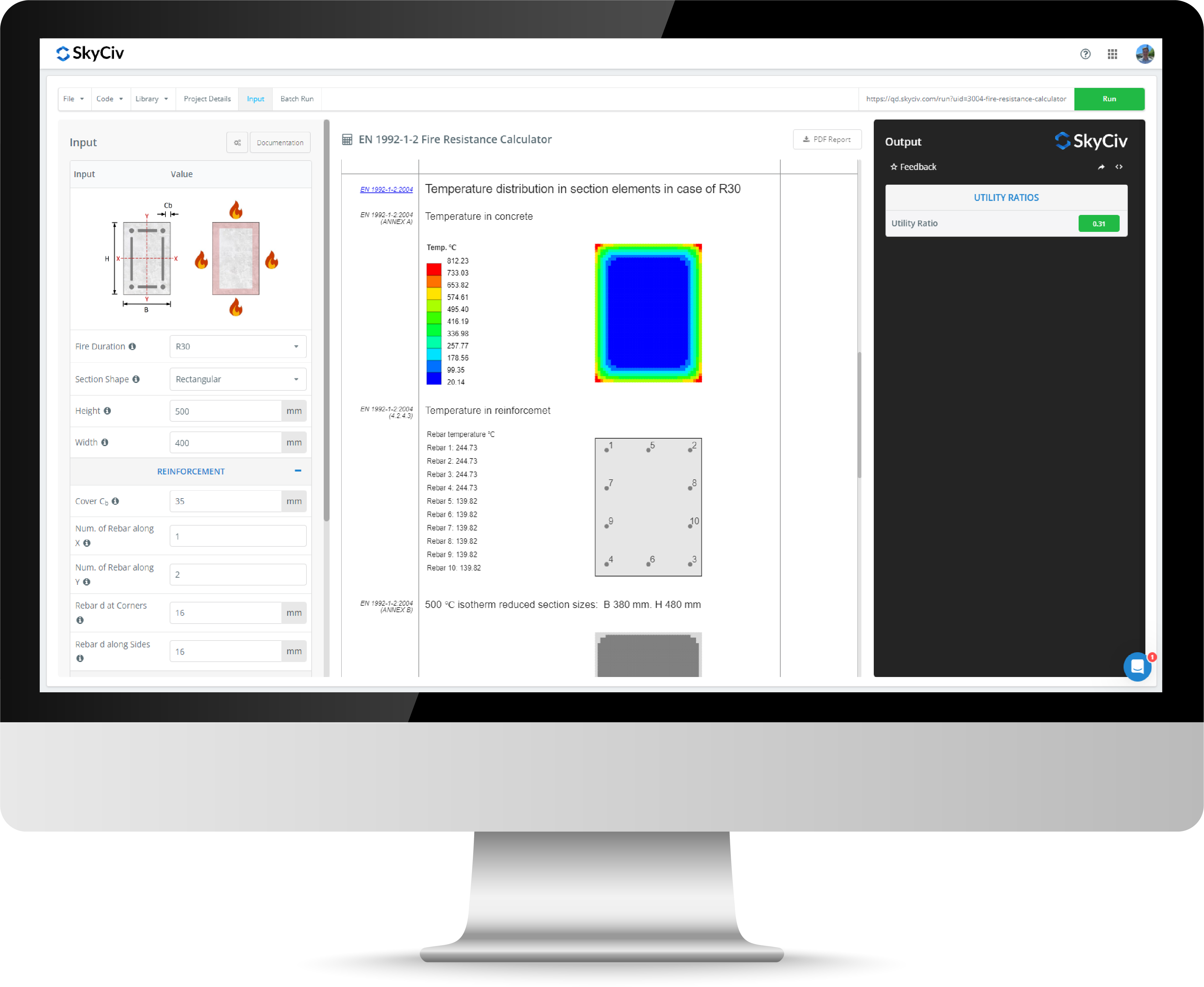ACI 318-19 Spread Footing Design Calculator
The SkyCiv Spread Footing Design Calculator is developed to assist in designing isolated concrete spread footings (also know as pad footings). It can be used in place of traditional pad footing design spreadsheets. This user-friendly and free calculator evaluates footings subjected to axial force, transverse (horizontal) shear, and bending moment of either axis for both reinforced and mass concrete footings. The footing is checked for axial force in compression as well as in tension (uplift) in compliance with the ACI 318-19. The Spread Footing Software considers the stability checks for soil bearing on the footing subject to vertical load and biaxial moments. In addition, it performs the concrete design based on the Ultimate Strength Design Method of the ACI 318-19.
About the ACI 318-19 Spread Footing Calculator
What Inputs are Required?
Various inputs are required to complete the design checks for the pad footings. The inputs include:
- Footing Dimensions and Material
- Loading
- Concrete Properties
- Reinforcement Properties
- Geotechnical Parameters
Once all the inputs have been filled out click the "Run" button in the top right to complete the spread footing design.
Does the Spread Footing Calculator include Stability Checks?
The program considers the stability checks for soil bearing on the footing subject to vertical load and biaxial moments. In addition, it performs the concrete design based on the Ultimate Strength Design Method in accordance with ACI 318-19. The soil pressures are calculated using the solution of Bellos and Bakas and the footing is assumed to be perfectly rigid with constant thickness. The pressures may also be calculated when only a part of the footing is in contact with the soil. This is especially useful for footings with small vertical loads and large moments, such as the case of footings at the corners of buildings under lateral loads.
Spread Footing Loading
This spread footing calculator allows the input of lateral loads (shear and moment) and it can deal with four load cases (dead load, live load, roof live load, and wind or any other lateral load case). The user should check the load combination factors of the table and add or modify them accordingly to the adopted loading code. The weight of the pedestal is added to the specified dead load and therefore all factors included in the combinations will affect this load.
Which Spread Footing Checks are Completed?
Maximum eccentricity, overturning, and sliding checks are performed by this spread footing software. The last check does not include the passive pressure contribution. It is always desirable to avoid concentration of stresses in the soil and thus the program has a warning status when the resultant is outside the middle third of the footing. In extreme cases where the load eccentricity generates ratios of maximum stress vs. mean stress greater than 6, the spread footing program triggers an error due to the large concentration of stresses and possible large rotation of the footing. In such cases, the user is advised to enlarge the footing to have a better distribution of stresses or use other solutions as strap footings are not considered in the scope of this tool.
Related Tools
- Bearing Capacity Calculator
- Lateral Pile Stability Calculator
- ACI 360 Slab on Grade Design Calculator
- ACI 318 Strip Footing Calculator
- CSA A23.3-14 Concrete Slab Resistance Design Calculator
- Punching Shear Calculator
- Screw Pile Design Calculator
- AS 2870 Slab on Grade Design Calculator
- Concrete Column Calculator



